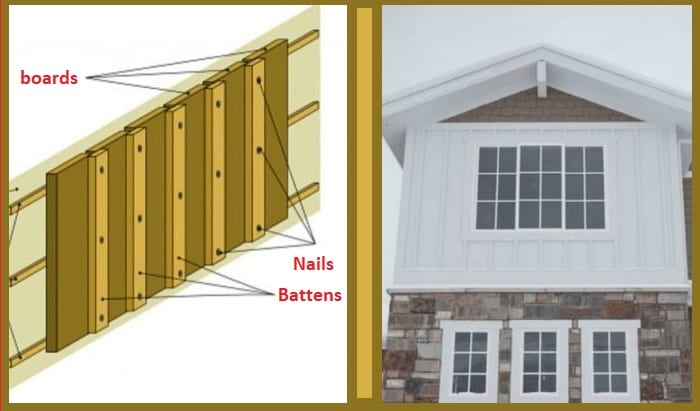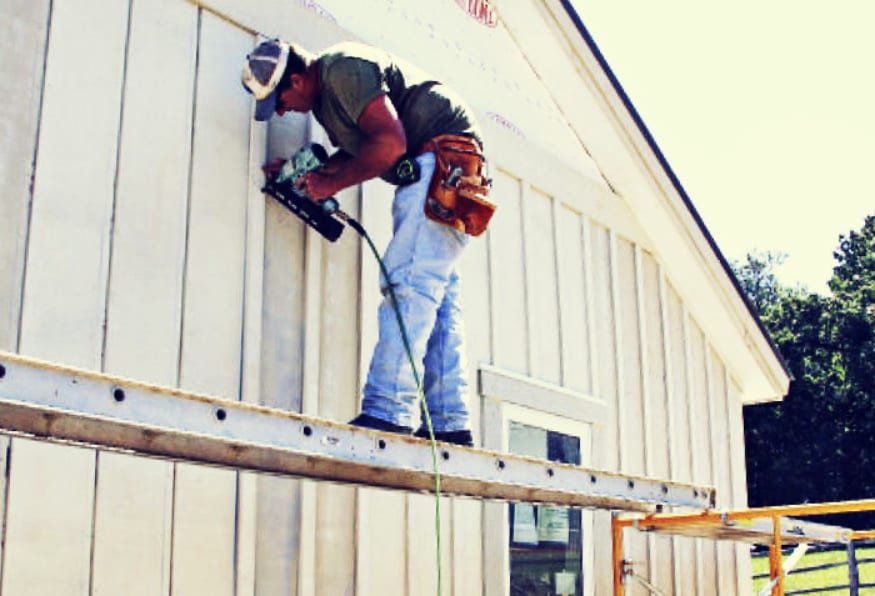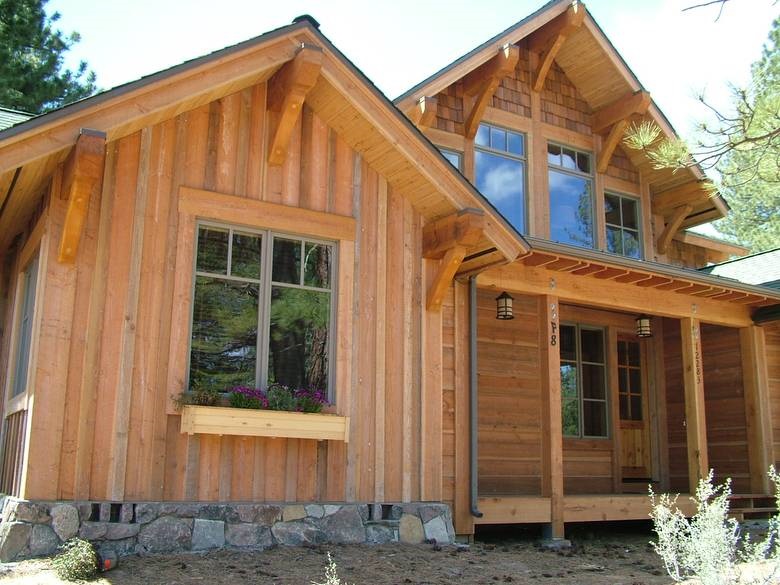Contents
What is Board and Batten Siding?
Board and Batten Siding is a type of exterior facade cladding which is placed vertically or horizontally in the form of boards and battens (panels and slats). For the first time, this system is used in Norway and Switzerland for protection purposes then this system has been used in facades, barns and western houses in The United States of America (USA). Nowadays this system regained popularity in The United States of America (USA) because people are using it in a modern way and it has a rustic view on the outside while wrapping the building construction and create the facades.
Click here to read the blog post about: Siding Types

While traditional board and batten siding uses wide boards and overlying narrow battens, there are many different techniques and patterns to do conventional narrow over wide technique. For example; reverse board and batten panels, installing wide boards over narrow battens, etc. There is also overlapping wide boards alternative which is board and board without battens.
There are many reasons to use this system. Some of those :
- It is resistant,
- The cost of construction is cheap compared to other external facades,
- Installing Board and Batten does not require qualified personnel
- The materials are simple and you can find it anywhere.
- There are many kinds of patterns and colors
Click here to read the blog post about: Board And Batten Siding Advantages and Disadvantages
How to Build Board and Batten Siding Exterior Walls?

When boards installed up and down (vertical siding), they do not regularly intersect stud framing members like horizontally installed boards do. This problem had been solved by adding horizontal framing pieces between studs called blocking. Installing blocking is a lot of work and maybe impractical remodeling work. Blocking also reduces the space in the wall cavity for insulation and can make it hard to run wires and the technical system in walls.
Probably the most common using is 1×10 boards and 1×2 or 1×3 batten. You can also use 1×8 1×12 board and 1×4 battens. To eal out the moisture problem, the boards should be in sound condition and free of open knots, and the battens should lap 3/4 inch (1,9cm) onto the boards on both sides.

What Materials Are Used For Build Board and Batten Siding?
List of Board and Batten Siding Materials :
Hammer or nail gun, miter saw or circular saw, Jigsaw, Tape measure, Drill, Level, Caulking gun, Utility knife, T-bevel, Stapler, Boards and battens, Board for the water table, Stainless-steel or galvanized siding nails, Caulk, Primer.

Advice: Cedar will be a good choice as a raw material because it’s soft. Harder wood such as pressure-treated pine will not seal as well and it’s more likely to crack.
This system can be installed onto plywood or OSB (Oriented strand board) sheathing. If your sheathing is not solid, you will need to do attach horizontal furring strips first.

The nails must be compatible with the specific wood species that you will use because some woods will react with other materials and it will cause discoloration at the fastener site. Specially designed tips of siding nail will help to prevent splitting of the siding. Nails will need to be long enough to pass through the siding and into a solid wood substrate at least 1 1/4″(0,63mm). The nails you are going to use must be hot dipped galvanized steel or stainless steel, otherwise, they may cause problems later. Screw Length and Size for Board and Batten Siding Installing is also important. For more info about dimensions, read this : BEST BOARD AND BATTEN SIDING DIMENSIONS

If you are planning to paint or stain your siding, consider finishing all four sides (front, back and both ends). In addition, if you are planning to use solid colors on your siding, consider a base primer coat, it’ll be beneficial. Some paints and stains perform well without a primer, but even with these products, most will benefit from more than one coat of finish and/or starting with a primer coat. Check out our best color collection : Most Populer Colors For Board and Batten Siding
Board and Batten Siding Steps

First of all, you need to place water trays on the wall. All around house or your structure, install 1×6 or wider water table, with its bottom edge 2 inches below the sill plate. Snap level chalk lines to help you keep the water-table boards straight and attach them by driving two or three nails at each stud.
You have to measure the wall to be made will determine the door and window gaps and according to them, your work will be a lot easier than the other way.
Put the first board and then check and the nailing phase will start. The gap is determined by the pattern as a pattern for the gap and the boards continue to insert. After the boards will be placed, the battens will be placed between the boards and they are nailed.
Optionally you can paint the boards and you can finish your sidings.
Click here to read the blog post about: Board and Batten Siding Installing Step by Step
Choosing a Material for Board and Batten Siding Installing

Board and Batten Siding is a type of coating made of different materials. Wood, processed wood products, vinyl, fiber cement board are options such as. You should investigate to find out the suitability of these materials. Advantages and disadvantages should be identified.
There are options such as redwood, cedar, and cypress. These species are often used. For wood, the possibility of insects should not be forgotten and solutions should be introduced to increase the resistance to water and fire. The aesthetic suitability of the wood makes it preferable depending on the climate.
Vinyl is a material that lasts longer than wood and requires less maintenance.
Fiber cement boards are similar to concrete. They Provide long-lasting durability, very low maintenance, does not require. Moisture and fire resistant make it one of the most preferred but its weight and artificial appearance and the fact that it produces a lot of dust during construction are the reasons for this material to drop.
Conclusions the material options are very extremely. When taking attention to climate and building criteria, calculating the process and cons of it will have great benefits.
Board and batten siding application can provide the user from many sources. Online shopping sites, seen as the plus of today’s technology, are the reflection of this. Amazon, e-bay, James Hardie and Chinese original Alibaba, as well as sites can be found in the smallest local sites, it is possible to find a lot of resources. The external coating like a separate discipline is the local company. Also, if simply type of wood like will be used, it is possible to provide small businesses like a carpenter. The local suppliers are included in this job and see as a different business sector, you can find the material every time.
Board on Board Siding
It is a siding made by installing two vertical boards instead of one horizontal and one vertical board and battens. Usually the boards are the same width. For example, 6″ boards can be installed with 4″ gaps with 6″ boards covering the gaps and overlapping the boards below by 1″ on both sides.
You can also read :
How To Find Contractor and Materials : Find A Siding Contractor And Product Company
Prices of Board and Batten Siding : What is Board and Batten Siding Cost
What is your reaction to this?


 I liked it
I liked it Wonderful
Wonderful Thanks
Thanks Good
Good Hahaha !
Hahaha ! Incredible
Incredible Interesting
Interesting Wrong
Wrong




